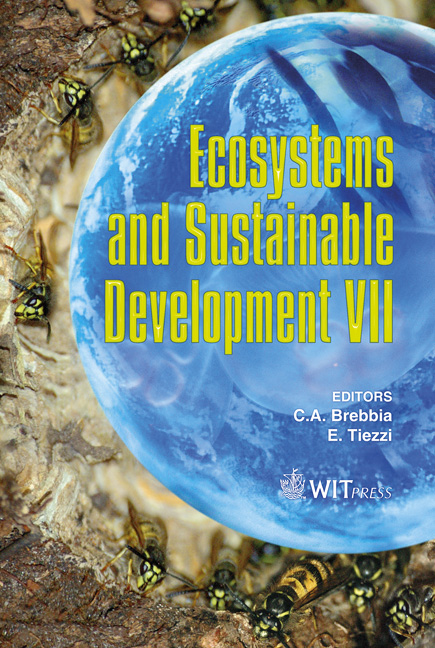Accumulation Coefficient And Translocation Factor Of Heavy Metals Through Ochradenus Baccatus Plant Grown On Mining Area At Mahad AD'Dahab, Saudi Arabia
Price
Free (open access)
Transaction
Volume
122
Pages
10
Page Range
459 - 468
Published
2009
Size
612 kb
Paper DOI
10.2495/ECO090421
Copyright
WIT Press
Author(s)
A. S. Al-Farraj, T. G. Al-Otabi & M. I. Al-Wabel
Abstract
The plant species Ochradenus baccatus, which naturally grows around the Mahad AD’Dahab Mine, has been selected for study due to its ability to accumulate heavy metals (As, Cd, Cu, Pb, Zn). Five samples from shoots and others from roots of Ochradenus baccatus were collected. Moreover, five soil samples were collected from an area such as to make a representative soil sample. Plant and soil samples were analyzed for As, Cd, Cu, Pb, and Zn. The results showed a high concentration of soil heavy metal content with respect to As, Cd, Cu, Pb, and Zn (30, 7, 479, 355 and 1481 mg kg-1 respectively). The concentration of Cd, Cu, Pb, Zn in shoots of Ochradenus baccatus were 1.7, 30.8, 10.2, 169.5 mg kg-1, respectively. On the other hand, the concentration of heavy metals in the roots was as follows (mg kg-1): Cd: 3.9; Cu: 114; Pb: 43; Zn: 430. With the exception of As, heavy metals (Cd, Cu, Pb, Zn) tend to be accumulated in the roots rather than the shoots. The accumulation coefficient of heavy metals in the shoots was low (0.03-0.25), while it was higher in the roots (0.04-0.58). Based on the accumulation coefficient, heavy metals can be ordered as follows: Cd> Zn> As> Cu> Pb for shoots and Cd> Zn> Cu> Pb> As for roots. Statistical analysis was performed to examine the heavy metals accumulation in Ochradenus baccatus at a 0.01 level. A highly significant difference was found between Cd and other metals in both the shoots and roots, while the difference was highly significant between Zn and other metals, with the exception of As and Cu, in shoots and roots respectively. From the above, Ochradenus baccatus should be described as not-excluder and can be explored further for phytoremediation of metal polluted soils. On the other hand, the practice of providing foliage and pods as fodder for livestock should be avoided in the Mahad AD’Dahab area. Keywords: heavy metals, Ochradenus baccatus, Mahad AD'Dahab, Saudi Arabia, gold mining.
Keywords
heavy metals, Ochradenus baccatus, Mahad AD'Dahab, Saudi Arabia, gold mining





